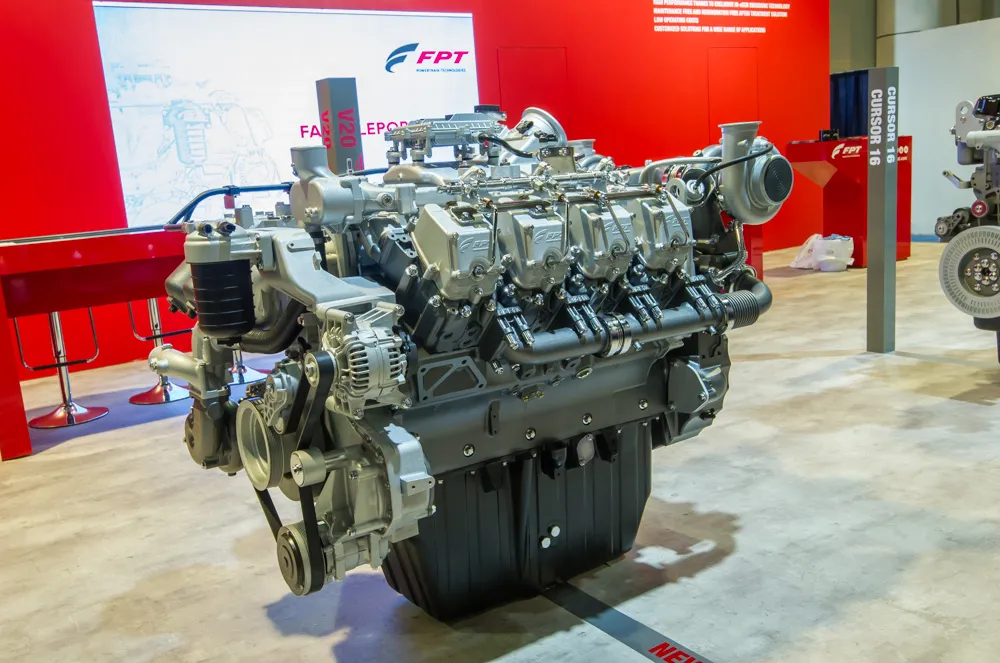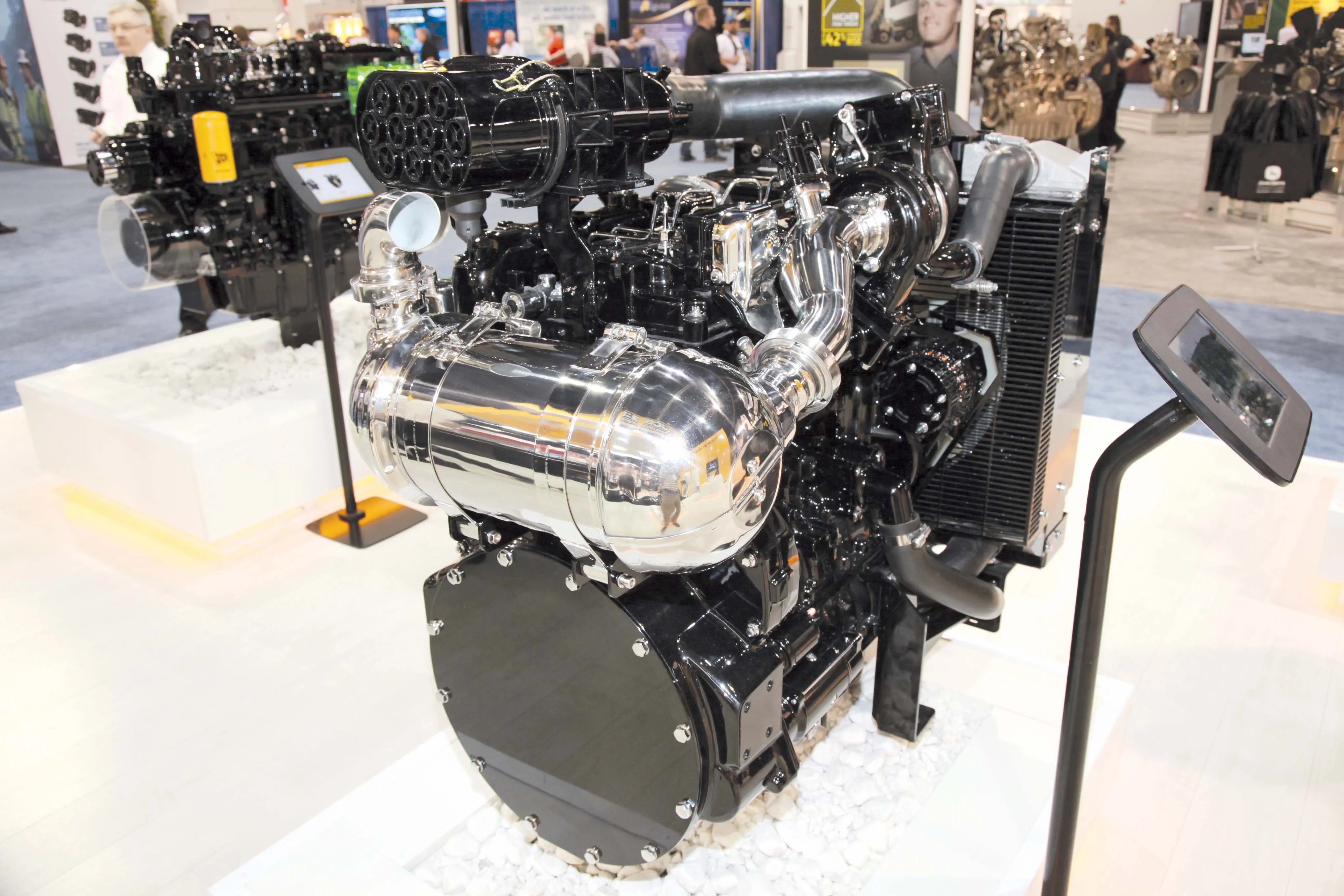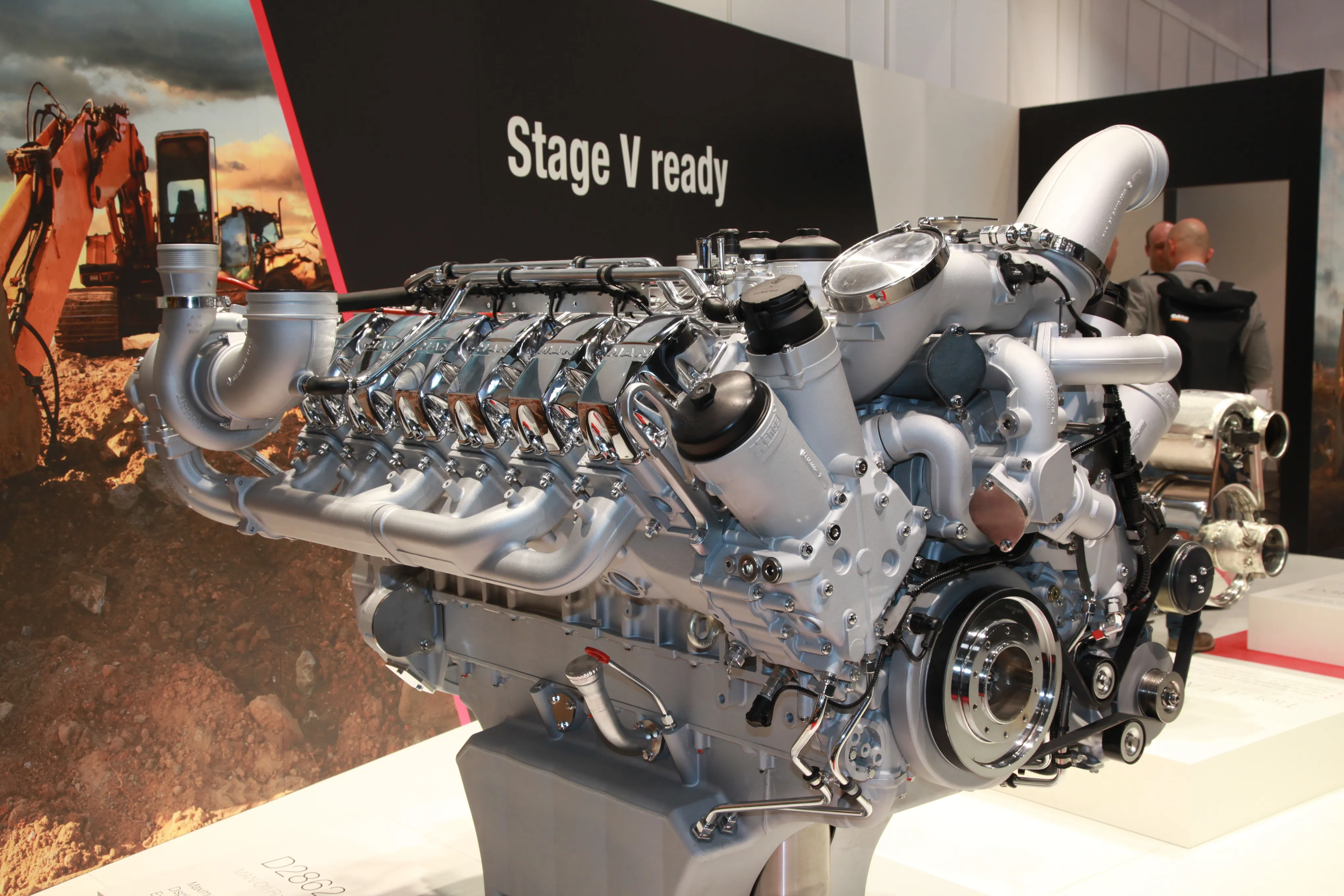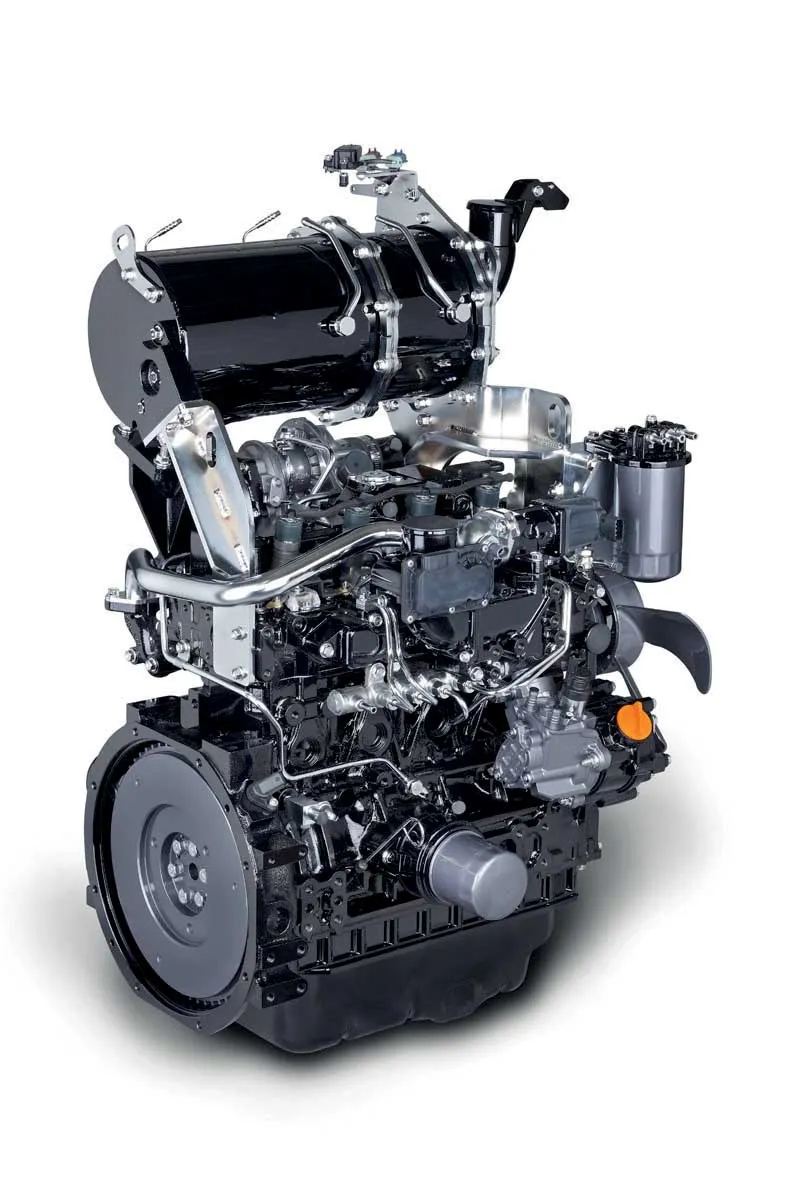
V20 packs a punch from its V8 architecture, with up to 680kW of power available from 1600-1800rpm, and 4100Nm of torque at 1500rpm. FPT said the V20 is currently the most compact engine of its category, which it sees as a viable alternative for much larger V12 units that offer similar performance.
FPT said the new engine is also Tier 4 Final/Stage V compliant, and it achieves emissions regulations without the need of DPF or cooled EGR systems.
A new design of piston bowl and combustion chamber is claimed to deliver a 2% reduction in fuel burn compared to similarly-powered V12 engines, and FPT said the option of 1,000hour oil drain intervals exist as an extension to the 600hour interval offered across other FPT engines.
The FPT V20 has been specifically developed to suit stationary and mobile applications. It features two wastegated turbochargers with a cross-bank exhaust feed to even out pulsing that can affect vee-engine formats. The engine also gains the latest generation common rail fuel injection with system pressures of 2200bar, which comprises fuel rails on each vee, and a third ‘balancing’ rail, to even out any hydraulic pulsing from the eight-cylinder layout.









